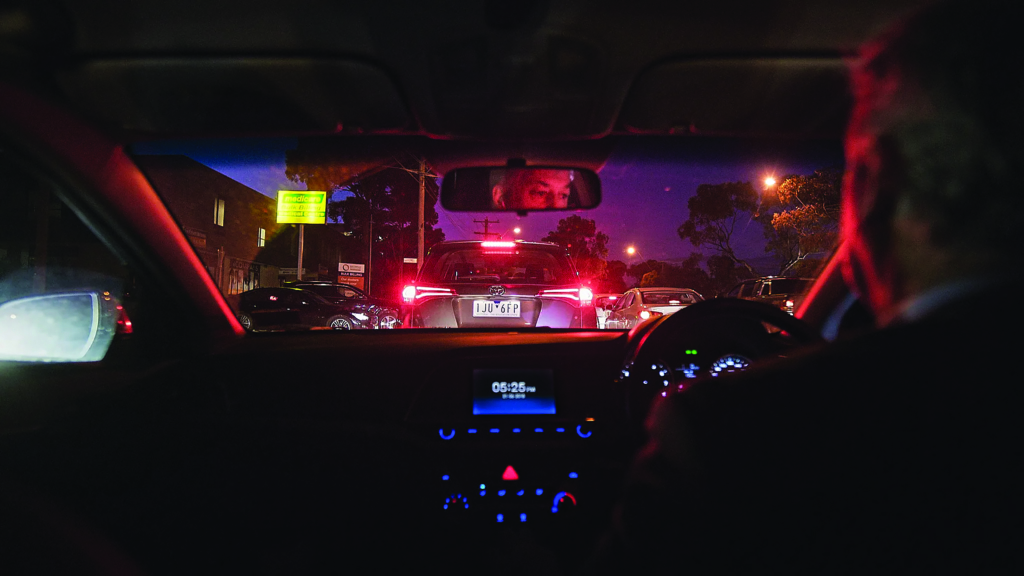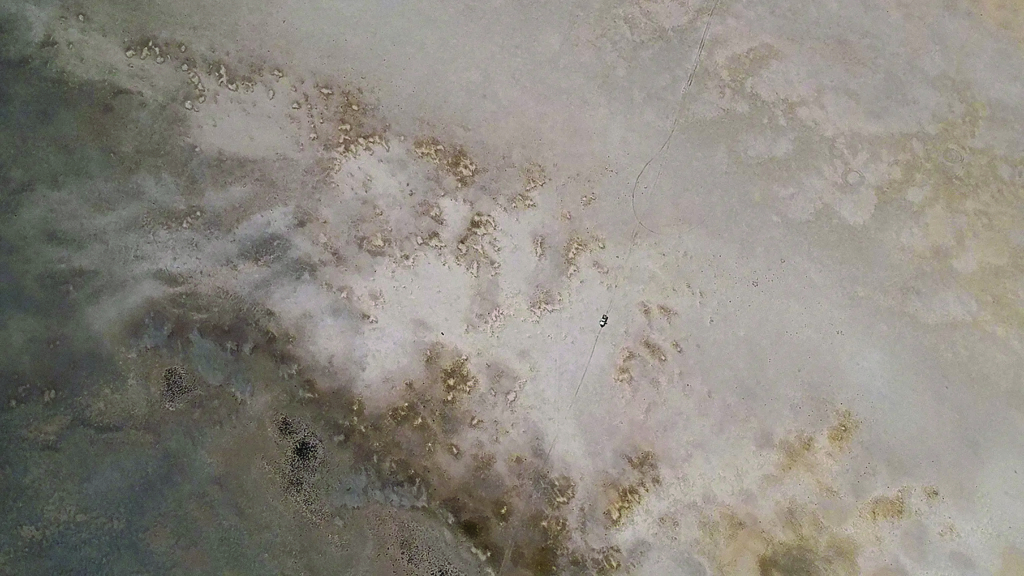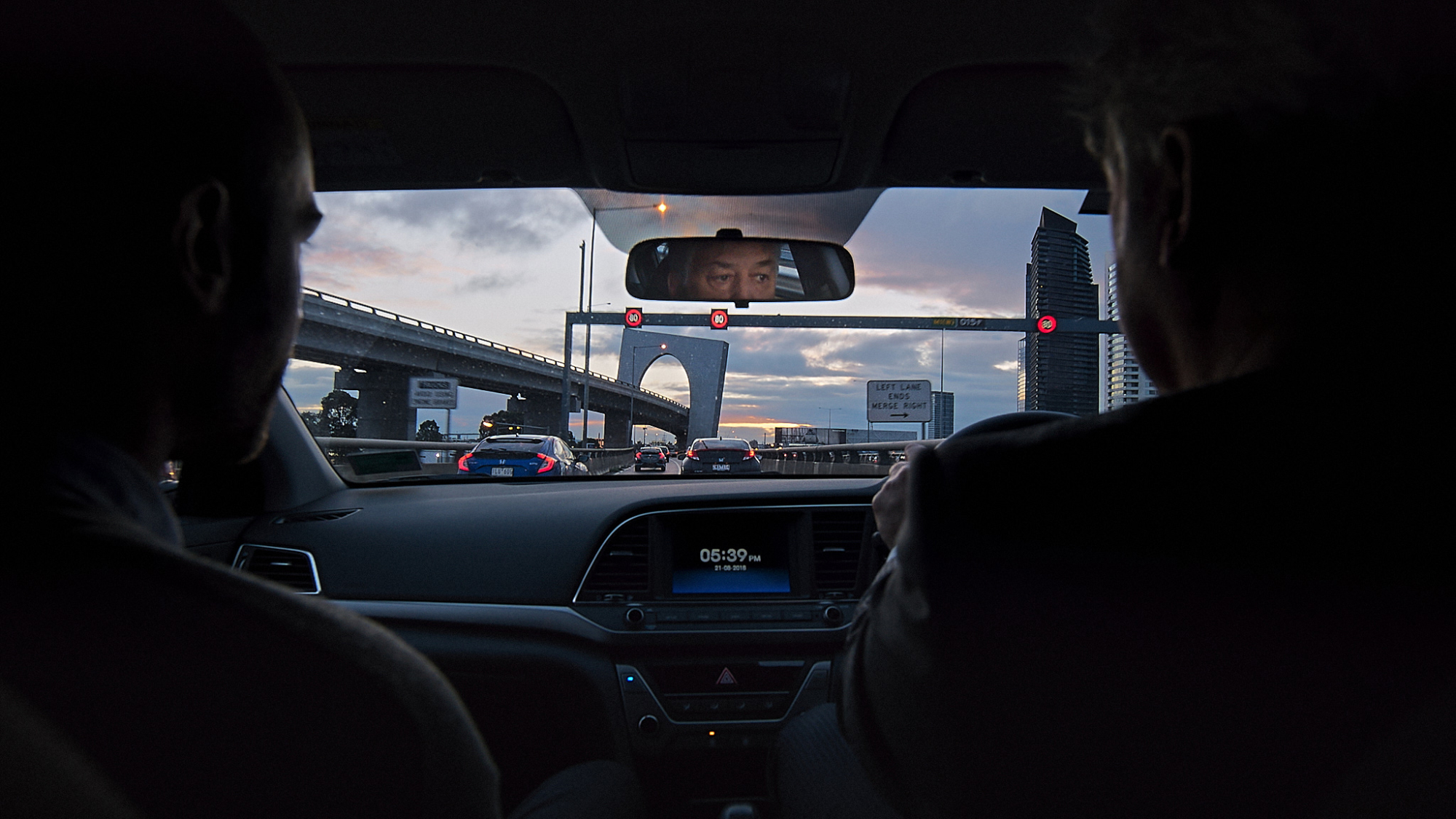The automobile is a symbol for a lot of things in cinema – usually, for freedom and independence. How many bright and shiny coming-of-age dramas from the United States have we seen with young adults on the verge of the rest of their lives, their hand outstretched from the window or emerging out from the sunroof, breeze blowing through their hair as they charge towards the horizon?
Since the earliest days of its creation, the car has come to reflect upward mobility in society, too. Do you have one, or do you not? If you do have a car, what type is it? How much did you pay for it? How fast can it go, and how far can a tank of petrol take you? You can tell a lot about a movie character by what they drive.
The mythology of the car in Australian culture surpasses even that of the beach in a Tim Winton adaptation (complete with surfboards strapped to the top of a – you guessed it – Sundowner panel van). Our country’s long, flat landscapes and rural townships have, for many, made cars as important to daily life as oxygen. Classic local films across the years have rested their cinematic identities on the roar of a motor engine as the (usually) young male petrolhead lead slams his foot on the pedal. The FJ Holden (Michael Thornhill, 1977), The Big Steal (Nadia Tass, 1990) and, most famously, Mad Max (George Miller, 1979) and its sequels are just some of the films that built this nation’s internationally ascendant symbol as one of a bloke with a car. It was status; it was image; it was the world beyond our parents’ front door.
In the case of international films, cars are often vehicles – pun very much intended – for self-reflection and redemption. Consider Paris, Texas (Wim Wenders, 1984), with its hero journeying behind the wheel to atone for his sins as a husband and a father, or Thelma & Louise (Ridley Scott, 1991), in which two women drive to discover that they are no man’s property. Alternatively, there’s 2021’s surprise Oscars success Drive My Car (Ryūsuke Hamaguchi, 2021), wherein grief is compounded by the walls of a red Saab; or even something more action-oriented like Drive (Nicolas Winding Refn, 2011), in which the car is literally our nameless (anti)hero’s only mode of escape from the life he has crashed into by accident.

Which is probably where it’s most appropriate to introduce The Plains (David Easteal, 2022). Rarely has the car been used like it is here. This is a film that does something different and altogether radical with the car as a symbol on screen: it makes it thoroughly unremarkable. Here, our vehicular host for the three-hour runtime is just a shell, a mere mode of transport from one place to another. This isn’t Max Rockatansky’s Pursuit Special; there are thousands of cars like the one we’re within in The Plains, and you wouldn’t look at this one twice. Here, the automobile is a symbol of our society’s endless churn of daily life: the humdrum routine of a commute that the now two-plus years of COVID-19 has taught us is largely a big old waste of time; the hours we have all spent going places we don’t need to just to earn money for doing work we could be doing elsewhere.
But it is within that space that The Plains achieves its most remarkable feat. By showing us the car in its humblest circumstances, it allows those who sit inside it to navigate and assess their lives. It becomes a space of therapy and of casual male bonding, yet one stripped bare of the narrative contrivances and refined dialogue that a dramatic feature would trade in. Certainly, nobody here is saying nonsense like ‘I live my life a quarter-mile at a time’ as if they’re Vin Diesel.[1]A line delivered by the actor (as protagonist Dominic) in The Fast and the Furious (Rob Cohen, 2001).
By using the car as a tool for life assessment, The Plains has much more in common with the likes of Rob Epstein and Jeffrey Friedman’s AIDS-inspired journey through the Deep South in Where Are We? Our Trip Through America (1992) or the work of Chantal Akerman – particularly News from Home (1976), in which everyday shots of New York City are infused with mundane narration, which somehow combine to form a towering work of documentary.

The Plains’ main subject is a fiftysomething lawyer named Andrew (Andrew Rakowski). Throughout the film, the director’s camera sits unmoving in the car’s back seat,[2]Except for the occasional drone footage that Easteal intersperses throughout, taken by Rakowski on his property in Horsham, a town roughly halfway between Melbourne and Adelaide. framing our driver’s face only in his rear-view mirror or through the windscreen as he walks towards his car at 5pm like clockwork. We watch as he departs his office (a legal centre of some sort) in Melbourne’s outer suburbs and then drives down the freeway towards the Bolte Bridge, and on to his home in the city’s west. He has a ritual: as he turns out of the car park, he will call his mother’s retirement home in Adelaide (he calls her ‘Mutti’) to check in on her, and then his wife – using headphones, not bluetooth (which provides the biggest laugh in the film). He complains about traffic congestion and passes any number of those strange glass-and-concrete-block structures that dot the Eastern Freeway and other major roads just like it.
The Plains is as close to non-fiction as you can get without it actually being non-fiction; the realism that Easteal achieves in the film is often better at communicating human frailties, ambitions and sadness than most works of cinema, documentaries included.
He is frequently joined in this commute by a guest passenger and colleague, David – played by the film’s thirtysomething director – to whom he offers a ride home (though how he got towork we never find out). The pair discuss each other’s lives in ways that are often frank or evasive, and we learn that each man is – to use another driving metaphor – at a crossroads. Over eleven of these filmed home-time journeys, Andrew grows increasingly despondent about his current position. ‘I need to shake things up. I can’t just keep doing this day in, day out,’ he observes. ‘It’s pointless.’ David probes him about his home life, including why Andrew and his wife, Cheri (Cheri LeCornu), never had children, and how the pair have handled difficult periods in their marriage.

David, an aspiring lawyer and sometime filmmaker, is also at a crossroads as he prepares to take the bar exam. He doesn’t know what he will do if he doesn’t pass – something Andrew asks him about, seemingly quite insensitively, several times. David is, after all, already older than most who graduate law school. He squirms at discussing his own love-life (normally a topic of bragging rights for boys in their rigs), having recently been broken up with by a woman he thought could be something ‘special’. It turns out he isn’t a fan of the transactional effect that dating apps such as Tinder have had on meeting prospective romantic partners, either. Inviting us to compare David’s situation with that of Andrew, who has been with his partner for decades, these discussions reflect the changing attitudes and realities of finding a partner from one generation to another – and how men are reacting to these shifts, too, by expressing vulnerability and admitting a desire for romantic sustenance. As the light changes outside throughout the year, these two men form something of an odd pairing: one built around ideas of contemporary masculinity that likely didn’t exist when Andrew himself was a young man, perhaps hooning around in his first car.
However, The Plains isn’t necessarily as straightforward a movie as it may seem. In fact, while it has all the ostensible characteristics of documentary, it is at least partially a work of fiction. Similar to other hybrid documentaries like Bloody Nose, Empty Pockets (Bill & Turner Ross, 2020), The Plains dramatises reality in such a way that you’d never know that what was happening wasn’t real, even though the events described did, in fact, actually take place. Yes, Rakowski and Easteal shared rides home from their legal jobs; yes, Rakowski’s mother was in a nursing home with dementia; and, yes, Rakowski and his wife are as they are portrayed. But these scenes are ‘loosely scripted’, and not actually documenting real conversations as they unfold. As Easteal notes in his director’s statement,
We filmed approximately once each month over a year. The content of each shoot was loosely scripted in the month preceding the shoot – based on what had occurred years prior, as well as more recent events, while remaining open for digressions to occur spontaneously – and was comprised of re-creating real events, documentary and fiction. Through the process the film evolved in a very dynamic way, and unintended themes present in the film started to take shape.[3]David Easteal, ‘Director’s Statement’, in The Plains press kit, 2022, p. 4., available at <https://www.davideasteal.com/wp-content/uploads/2022/01/The-Plains-Digital-Press-Kit.pdf>, accessed 23 May 2022.

None of this should really change how we approach the film, however. Despite what we may like to believe, documentary filmmakers are rarely impartial in what they depict; they often sculpt and script and edit material into a finished work that most effectively evokes the ideas and the story they want to tell. The Plains isn’t a documentary, in the sense that nothing here is filmed as it originally happened – and yet it kind of is.
But much as this film comes at the old ideas of a ‘car film’ and subverts them, so too does it subvert assumptions about what can or should be considered a documentary. The Plains is as close to non-fiction as you can get without it actually being non-fiction; the realism that Easteal achieves in the film is often better at communicating human frailties, ambitions and sadness than most works of cinema, documentaries included. And, truly, an audience would have no idea that what is being depicted isn’t 100 per cent real unless informed prior to viewing: every spoken inflection, repeated phrase and stumbled, delayed response is accurate to how people speak without scripts. Through mimicking non-fiction, The Plains somehow tells an even greater truth – and, for Australian independent filmmaking, that is an extremely exciting achievement.
Compared to most Australian documentary features – seemingly bound less by artistic and formally adventurous choices than by the polished but formulaic stylistic preferences of the television networks that are most likely to screen them – The Plains is positively experimental, and certainly well into the realm of slow cinema. Some of its strongest influences appear to be the work of directors like Jafar Panahi,[4]See David Heslin, ‘Art as Resistance: History and the Individual in Jafar Panahi’s 3 Faces’, Metro, no. 201, 2019, pp. 58–63. Abbas Kiarostami and Zhengfan Yang.[5]See Nadin Mai, ‘Literally Distant’, The Arts of (Slow) Cinema, 9 November 2013, <https://theartsofslowcinema.com/2013/11/09/literally-distant/>, accessed 24 May 2022. This kind of formal audacity in an Australian film is genuinely rare to see, and it’s a quality that places The Plains on par artistically with radical cinematic works from across the globe.

As a result of its formal and emotional complexities, Easteal’s film has been justly rewarded internationally, screening in official competition at the International Film Festival Rotterdam as well as New York City’s prestigious non-fiction and hybrid-documentary showcase Art of the Real. At the time of publication, it will have also played at the Sydney Film Festival (although, notably, not as part of the Documentary Australia Award category, no doubt due to its blurring of the lines between fiction and non-fiction). Meanwhile, at this year’s Cinéma du réel film festival in France, The Plains competed alongside new works by the likes of Sergei Loznitsa, Ruth Beckermann and James Benning[6]Benning, perhaps coincidentally, once co-directed a short film, The United States of America (Benning & Bette Gordon, 1975), that used an identical camera set-up to record its two directors’ cross-country drive. – rare company indeed for an Australian filmmaker.
By manipulating his film’s narrative into the formal restrictions of improvised docudrama, Easteal has subverted conventional ideas about Australia and its cars in yet another way. Nothing is as it seems in The Plains, and behind everything we see is another story entirely. Andrew’s voice carries much of the film – as it has to, out of sheer necessity – and there is something uniquely satisfying about hearing this man, who sounds like every corporate man-of-a-certain-age in a suit I have ever met, talk so casually about regret and romance and his dreams in life. David, too – unlike most thirtysomethings we see on screen – comes across as a young man with goals and aspirations who shows real and tangible emotions (even if we barely see him beyond the back of his head).
As Australian society changes, The Plains holds something of a miraculous place within it. Every mechanical whirr and buzz that populates Nick Batterham’s hypnotic everyday sound design – every shifting gear, swooshing seatbelt, revving engine and blinking indicator – strikes me as more emblematic of Australian life in 2022 than anything else we have seen on screen in recent times. Most of us, after all, don’t get to live the life of a fictional movie character; what The Plains shows about the daily grind to just exist and the toll that takes on us is very much real. That Easteal has used the form of non-fiction to communicate those ideas allows the film’s themes to resonate even more effectively.
Ultimately, we never see Andrew arrive at the home he is going to; the film always cuts back to another day, another repeat of the same old routine. You will likely not see a more resonant editing choice all year for the millions of Australians who work and work and work and yet cannot get ahead. Through just one static camera angle, Easteal has said so much. This is an evocative dialogue between filmmaker and audience – one that will hopefully provide inspiration for all Australian filmmakers.
Endnotes
| 1 | A line delivered by the actor (as protagonist Dominic) in The Fast and the Furious (Rob Cohen, 2001). |
|---|---|
| 2 | Except for the occasional drone footage that Easteal intersperses throughout, taken by Rakowski on his property in Horsham, a town roughly halfway between Melbourne and Adelaide. |
| 3 | David Easteal, ‘Director’s Statement’, in The Plains press kit, 2022, p. 4., available at <https://www.davideasteal.com/wp-content/uploads/2022/01/The-Plains-Digital-Press-Kit.pdf>, accessed 23 May 2022. |
| 4 | See David Heslin, ‘Art as Resistance: History and the Individual in Jafar Panahi’s 3 Faces’, Metro, no. 201, 2019, pp. 58–63. |
| 5 | See Nadin Mai, ‘Literally Distant’, The Arts of (Slow) Cinema, 9 November 2013, <https://theartsofslowcinema.com/2013/11/09/literally-distant/>, accessed 24 May 2022. |
| 6 | Benning, perhaps coincidentally, once co-directed a short film, The United States of America (Benning & Bette Gordon, 1975), that used an identical camera set-up to record its two directors’ cross-country drive. |





